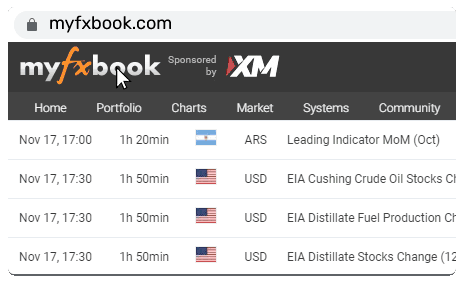Dollar Weakens as U.S. Election Week Opens Amid Economic Uncertainty and Political Shifts
As the United States embarks on election week, the dollar has shown noticeable weakness, reflecting both economic ambiguities and political undercurrents. The currency's recent slide against major global currencies marks a period of high-stakes decision-making for investors grappling with mixed economic signals, political uncertainties, and unpredictable market reactions.
Economic Conditions Add to Market Uncertainty
The dollar’s decline follows last Friday’s underwhelming payroll report, which showed a hiring slowdown, with numbers notably impacted by severe weather disruptions in parts of the country. Although markets are familiar with the seasonal ebbs and flows of job growth, the weaker payroll data has heightened anxiety over the resilience of the U.S. economy. In turn, this has sparked some reallocation away from U.S. assets as investors seek stability elsewhere.
Compounding this uncertainty is the Federal Reserve's upcoming rate decision on Wednesday. While the Fed is anticipated to lower rates by 25 basis points, the policy move comes at a particularly sensitive moment, mere hours before the first wave of election results begins to pour in. Traditionally, a rate cut could weigh down the dollar further, but its actual impact may vary depending on election outcomes and subsequent market sentiment.
Polling Trends Show Democrats Gaining Ground
Polls heading into election week show signs of momentum for Democrats in key battleground states. Notably, Vice President Kamala Harris has made unexpected gains in Iowa—a historically Republican-leaning state—indicating a potential shift in the political landscape. While Iowa alone may not secure a Democratic victory, its six electoral votes add value to the Democratic tally in what could become a closer-than-expected electoral battle.
Polling data compiled by FiveThirtyEight reveals that former President Donald Trump maintains a slim lead across most swing states, although his margins are notably narrow in pivotal states such as Pennsylvania and Nevada, with both showing less than a 0.5% lead. If Harris can capture all traditionally Democratic states (totalling 226 electoral votes) and secure wins in Michigan, Wisconsin, and Pennsylvania, she would reach the essential 270 electoral votes needed to clinch victory. Flipping Iowa could offer additional momentum, though Pennsylvania’s 19 electoral votes are the true prize for either candidate in this tightly contested race.
Potential Market Reactions and Dollar Volatility as Election Results Roll In
Polling stations open tonight across the country, and by the morning from tomorrow, voting will conclude in all the key battleground states, including Arizona, Georgia, Wisconsin, Pennsylvania, Michigan, Nevada, and North Carolina. As soon as vote counting begins, financial markets are likely to react, with fluctuations in the dollar’s value potentially starting overnight. The anticipation of high mail-in ballot volumes, however, could delay results, with some experts warning that an official winner may not be declared for days, as seen in the protracted 2020 election process.
In preparation, markets have shown a slight shift away from investments linked to a Trump victory, though overall, sentiment suggests an expectation that Trump will retain the presidency. Should Harris win, I’m predicting a downward trend for the dollar, given her platform’s focus on expansive domestic investments and social spending initiatives, which could pressure the currency in the short term. In contrast, a Trump win could spur dollar strength, especially if Republicans maintain a majority in both chambers of Congress, potentially leading to a pro-business legislative agenda that could further bolster the currency. However, if Democrats hold the House, any potential dollar rally under Trump may be more restrained due to likely legislative gridlocks.
The Role of the Federal Reserve in Election Week Market Dynamics
This election week isn’t just about political outcomes—economic policy decisions are also taking centre stage. On Wednesday, the Federal Reserve’s anticipated rate cut will coincide with ongoing election developments, creating a unique scenario where monetary policy and political outcomes could interact to produce unpredictable market effects. While rate cuts often weigh on the dollar, this week's decision will take place in an environment fraught with uncertainty, leaving the dollar’s immediate reaction unclear. Ultimately, the market’s interpretation of the Fed’s move will likely hinge on who emerges victorious from the election, as policy priorities will diverge significantly depending on the outcome.
Navigating Dollar Market Trends Through Election Week
As the election progresses, traders and investors will be watching for shifts in dollar exchange rates amid likely volatility and thinner market liquidity. Many hedge funds and institutional investors have established large positions based on their predictions of the election’s outcome, meaning swift adjustments are likely as new polling data and exit polls become available. While recent trends point toward a weaker dollar, quick reversals in trading positions could emerge based on unfolding election results and market sentiment.
At present, the consensus favours a slightly stronger dollar in the immediate term, though this outlook remains tentative. Market participants will closely track both polling results and early vote counts, with any significant changes likely triggering rapid adjustments to dollar positions. By the week’s end, the market may see more definitive trends emerge, but for now, election week has begun with a heightened atmosphere of unpredictability.
This content may have been written by a third party. ACY makes no representation or warranty and assumes no liability as to the accuracy or completeness of the information provided, nor any loss arising from any investment based on a recommendation, forecast or other information supplies by any third-party. This content is information only, and does not constitute financial, investment or other advice on which you can rely.



















